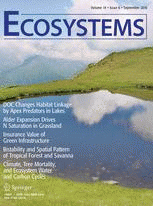Fire is a major factor shaping the distribution of vegetation types. In this study, we used a recent high resolution map of potential natural vegetation (PNV) types and MODIS fire products to model and investigate the importance of fire as driver of vegetation distribution patterns in Ethiopia. We employed statistical modeling techniques to estimate the distribution of fire and the PNVs under current climatic conditions, and used the calibrated models to project distributions for different climate change scenarios. Results show a clear congruence between distribution patterns of fire and major vegetation types. The effect of climate change varies considerably between climate change models and scenarios, but as general trend expansions of moist Afromontane forest and Combretum-Terminalia woodlands were predicted. Fire-prone areas were also predicted to increase, and including this factor in vegetation distribution models resulted in stronger expansion of Combretum-Terminalia woodlands and a more limited increase of moist Afromontane forests. These results underline the importance of fire as a regulating factor of vegetation distribution patterns, and how fire needs to be factored into predict the possible effects of climate change. For conservation strategies to effectively address conservation challenges caused by rapid climate shifts, it is imperative that they not only consider the direct influence of climate changes on the vegetation, species species, or biodiversity patterns, but also the influence of future fire regimes.
DOI:
https://doi.org/10.1007/s10021-015-9938-x
Altmetric score:
Dimensions Citation Count:























